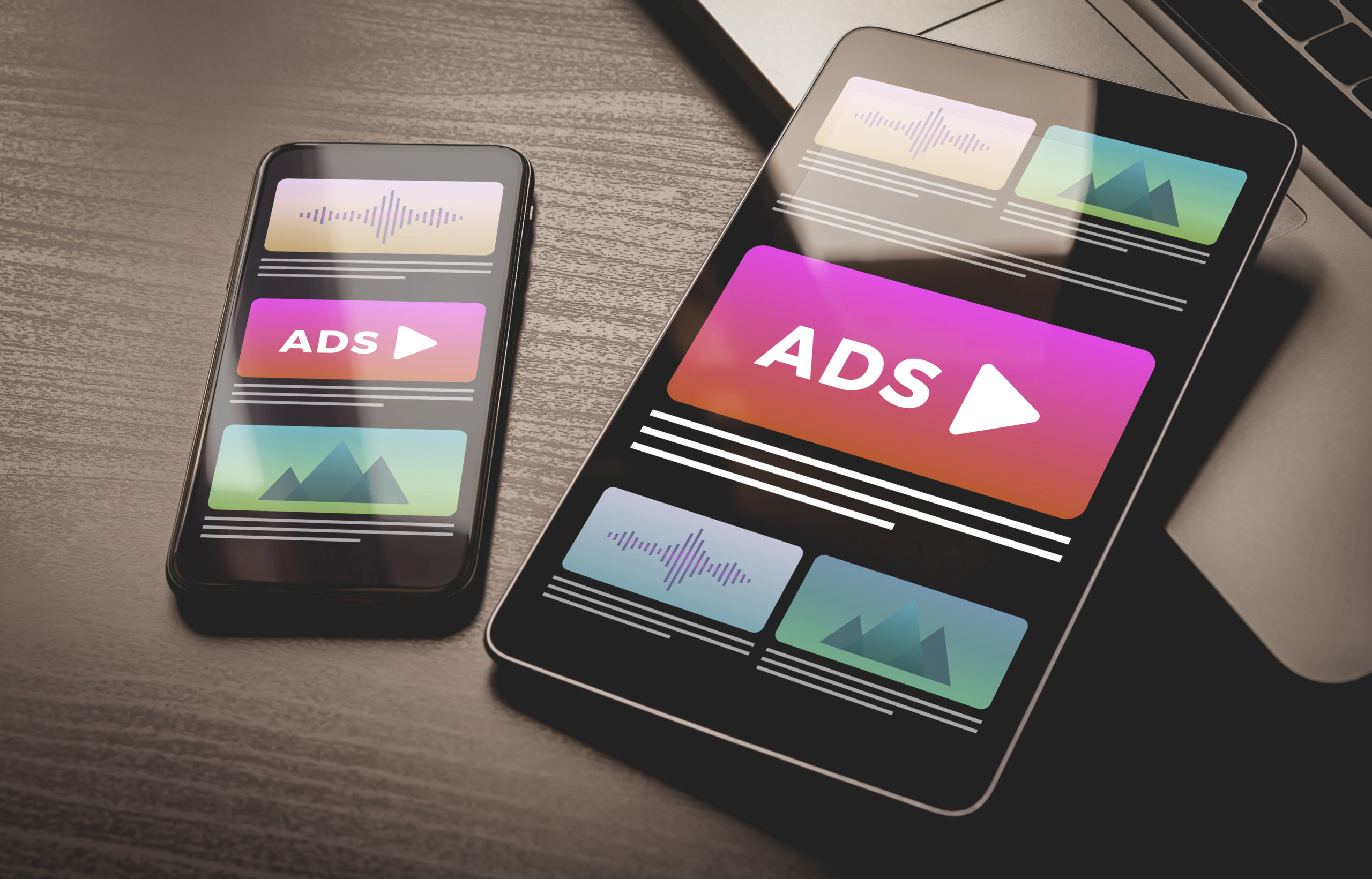“The future of mobile is the future of online. It is how people access online content now.” – David Murphy, Founder, Mobile Marketing Daily
Think about all the times you have been scrolling through your phone, looking for something to buy. Whether it is a suspiciously discounted t-shirt or a beach vacation package – mobile advertising has made it easier than ever before to find exactly what we need right when we need it. Business owners should take full advantage of this opportunity by leveraging the power of mobile advertising to reach their target customers and help their businesses grow. This blog explains how retail companies are uniquely positioned to benefit from effective mobile marketing campaigns. Let’s get started!
What is mobile advertising?
Powered by devices we use all the time, mobile advertising is highly accessible, cost-effective, and personalized marketing. The following three points best describe what mobile advertising is:
- Mobile advertising is advertising on mobile devices such as smartphones and tablets using wireless connections.
- Companies advertise through mobile text ads via SMS or banner advertisements that appear embedded on a mobile website.
- Mobile ads are tailored based on consumer tastes and (google) browsing history using data mining and other information-gathering techniques.
How does mobile advertising work?
“Mobile advertising works by way of a programmatic bidding process for ad placement, in which advertisers bid in real-time for the right to place an ad on a mobile device.” In more simple terms, mobile advertising targets consumers with product or service ads as they browse a website, view social media, watch a video clip, or use an app. These ads are short and designed to capture users’ attention quickly, engage and convert them.
Mobile Ad Personalization
Mobile ads are personalized because they are based on a user’s historical data, which helps to determine ad selection. For example, data is taken from a user’s previous Google search queries, website visits sites, or app usage. In addition, advertisers can combine demographic information, location, communication method, and gender to fine-tune how ads are targeted and when they appear.
What is the Size of the global mobile market?
“If your plans don’t include mobile, your plans are not finished.” – Wendy Clark, global CEO at Dentsu International.
The global mobile market is predicted to reach $340 billion (USD) by 2027 and to grow at a compound annual growth rate (CAGR) of 23% between 2023 and 2027. Studies by the Global System for Mobile Communications Association (GSMA) have found that 75% of mobile users will use smartphones by the end of 2025. The rapid growth in mobile device usage and increased access to internet services in developing countries, namely China and India, will significantly drive mobile market growth.
What are examples of mobile advertising?
How do retailers benefit from social media influencers?
Social media influencers are typically content creators with large numbers of social media followers. They regularly offer engaging online content to educate or entertain their respective audiences. Affiliate marketing advertising is one way influencers are able to dedicate themselves to content creation.
Mobile Retail Affiliate Advertising Programs
Retail affiliate programs enable businesses to tap into an influencer network to promote products to their audiences, providing links for consumers to buy directly from the retailer. In return, retailers pay these affiliates a commission for each sale. Moreover, affiliate marketing increases awareness and reinforces a retailer’s image and credibility.
Podcasts Advertising
Podcasts are the preparation and distribution of audio files using Really Simple Syndication (RSS) feeds to subscribed users. These files may then be uploaded to streaming services such as YouTube Music, Spotify or Apple Music, which users can listen to on their smartphones or other mobile devices. Moreover, Podcast advertising allows sellers to speak directly to potential customers through an audio ad. What’s more, podcast hosts or influencers can personally vouch for products or brands, which adds credibility. These ads appear at the podcast’s beginning, middle, and end. Data from Podsights found that advertisers experience average conversion rates of 1.43%
What are social media stories?
The concept of social media stories is important for advertisers understand. Stories increase user engagement with followers and consumers. The “stories feature” (aka, shorts) allows brands and influencers to communicate without interrupting their main content feed or timeline. Stories enable content creators to engage with followers directly and personally.
Instagram Story Ads
Instagram Story ads are paid content appearing as users watch Instagram stories. The platform stories are vertical, full-screen photos and videos that appear at the app’s header rather than in the news feed. Instagram has an average conversion rate of about 1.85%. Moreover, consumer research has found that 83% of Instagram users use the app to shop for new products and services.
Facebook Text & Image Ads
Facebook Image ads effectively present products, services, or brands using a single picture and an optional footer ad. Users create post boosters or image ads using the Facebook ads manager that Increases interest and awareness about a brand, product, or service. Facebook’s engagement rate averages between 1-2%. The rate increases the more ad content is tailored to the audience’s attributes.
Carousel Ads
Carousel ad formats combine short videos or images into a single advertisement. These ads are most popular on Instagram and Facebook, where marketers can display several pictures to improve conversion rates. As a result, carousels have an engagement rate of 1.92% compared to 1.74% for static images and 1.45% for videos.
Snapchat Ads
Snapchat ads are short 10-second full-screen vertical videos that appear while watching stories. Interested users can swipe up to interact with the ad. Advertisers can link the swipes to websites, videos, articles, or an app installation prompt. Furthermore, 64% of Snapchat users watch ads with the sound on, demonstrating a high level of interest. In early 2022, Snapchat’s conversion rate was about 0.6% which is low relative to other social media platforms.
YouTube Video Ads
YouTube advertising is managed through Google Ads and offers several ad formats. Moreover, access to google data ensures that YouTube ads reach maximum-sized audiences. For instance, video ads play before a user views the video, during the video, or appears in YouTube search results. So, YouTube ads can convert at 1-3%, depending on the ad format, content, and quality.
Tik Tok Promote Ads
TikTok Promote is a paid feature that lets advertisers choose a goal (ie, video views, likes, website visits or new followers) to achieve. What’s more, the promote feature allows ad campaigns to focus on an audience, with a set budget and scheduled ad durations. According to TikTok.com, the average conversion rate for Tik Tok promote is 3.4%.
Mobile In-Game Ads
In-game ads are a monetization strategy game developers use to increase revenues. Game developers receive ad revenue by showing mobile game ads to users. 73% of gamers are happy with the ad-based model of games today. Average conversion rates for in-game ads range from 2-8%.
Why are mobile ads so effective?
“Mobile is not the future; it is the now. Meet your customers in the environment of their choice, not where it’s convenient for you.” – Cyndie Shaffstall.
Mobile advertising provides ease of access and ad personalization to consumers at low cost to businesses. For example, the amount of relevant information about an end user allows ads to reach targeted consumers quickly and accurately. In addition, these targeted ads are highly alluring to viewers due to their personalized appeal. As a result, users are more likely to view and interact with the advertisements. According to MarketingDive, the average response rate for mobile ad campaigns is between 2.72% and 11.78%; making mobile ad strategies highly attractive to retail businesses.
Mobile advertising is a powerful tool that retail businesses can use to reach their target customers and boost sales. By creating mobile-friendly ads, retailers can take advantage of the fact that people spend more time on their phones browsing for products and services. With effective mobile marketing campaigns, businesses can connect with their target customers in a way that is convenient for them and drive sales growth. Have you ever made a purchase based on a mobile ad? What was it that convinced you to buy?
Thank you for reading our article!
TimeWellScheduled is a secure online time and attendance software that is 100% tailored to meet your scheduling needs! In addition, TimeWellScheduled facilitates employee attendance tracking & payroll tasks and enhances staff management capabilities. Plus, our service is free for up to 10 employees!
Click: here to download our (Excel) employee scheduling template; IT’S FREE!






